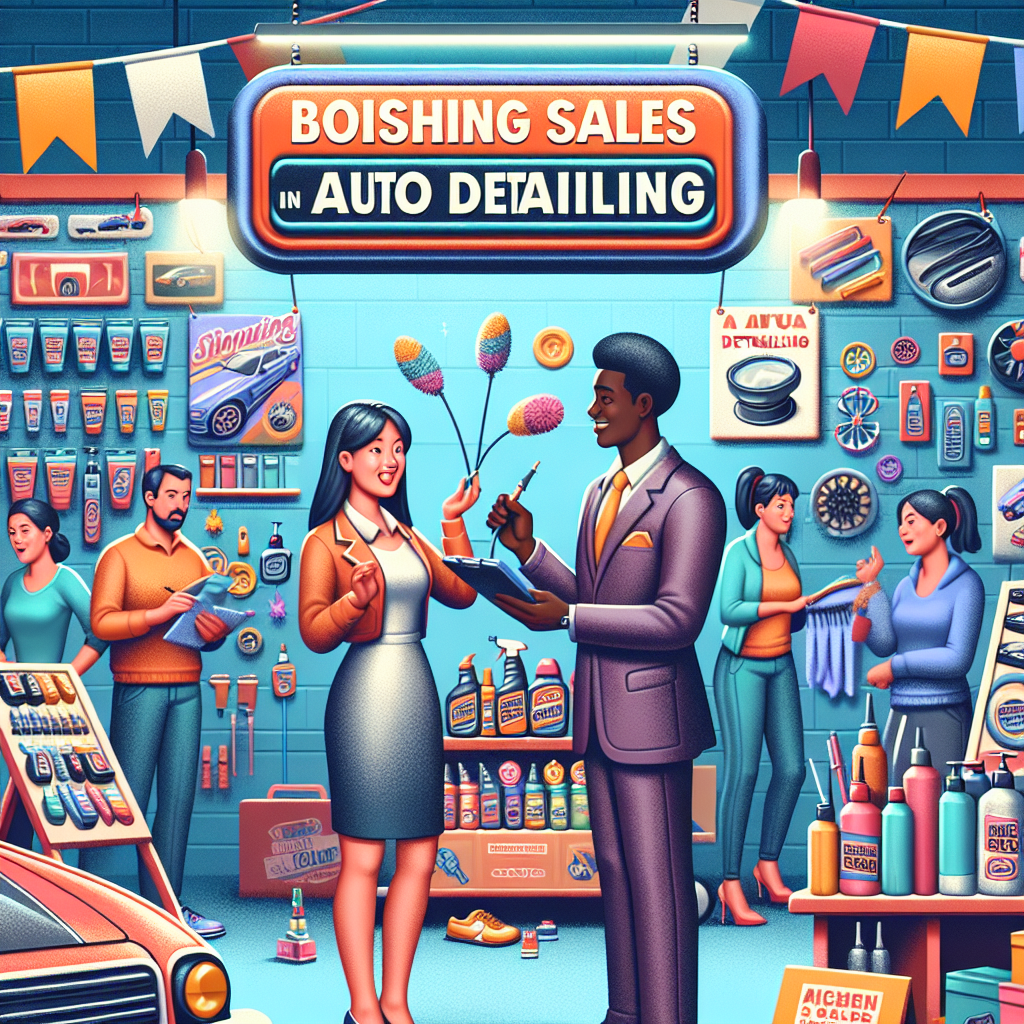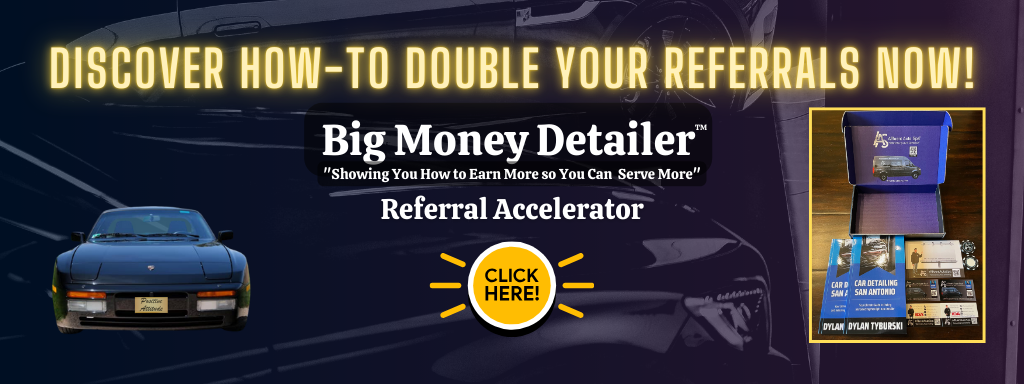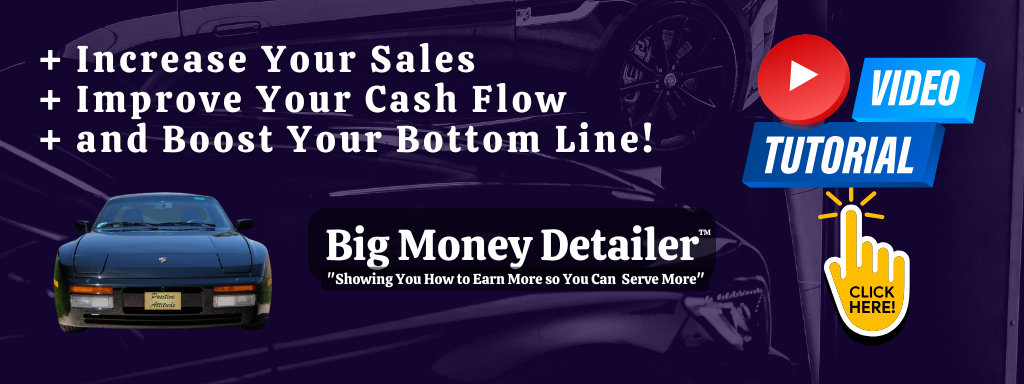Understanding Upselling and Cross-Selling
What Are They?
As someone who’s spent a ton of time in the auto detailing business, I’ve learned that upselling and cross-selling are not just fancy terms we throw around—they’re essential strategies for boosting revenue. Upselling is all about getting customers to opt for a more expensive item, while cross-selling involves tempting them with additional products or services. Both tactics can significantly increase spending per customer when done right.
Imagine a client comes in for a basic wash. With upselling, I might suggest they go for a premium wax instead of just the standard polish. With cross-selling, I’d offer them a tire shine along with their wash. By just shifting their choices a bit, I can boost their total spend and enhance their experience.
Mastering both of these techniques requires a good understanding of your customer’s needs and a genuine desire to enhance their experience. That’s what keeps them coming back for more.
Why They Matter
Building your business on upselling and cross-selling largely comes down to customer retention and satisfaction. When customers feel they’re getting value for their money and their needs are being fully accommodated, they’re more likely to return. Remember, people appreciate being offered options, especially when they’re all great.
From a personal standpoint, I can tell you that satisfied customers often lead to word-of-mouth referrals. They’ll share their positive experience with friends and family or leave glowing reviews online. This creates a steady stream of new customers eager to try out your services.
Also, let’s be real—for a small business, maximizing every customer interaction can transform your sales figures dramatically. It’s about smart strategies as much as hard work.
Implementing the Techniques
To successfully implement these techniques, it’s all about training your team to recognize upselling and cross-selling opportunities. This involves understanding the products and services you offer inside and out.
Make it a team goal to engage with customers, asking about their driving habits or future plans for their vehicle. This not only provides insight into potential additional sales but also helps to build rapport, creating a more personal experience.
Lastly, don’t forget to track what works and what doesn’t. Use feedback to adjust your tactics and keep refining your approach.
Identifying Customer Needs
Active Listening
When customers walk into your shop, really paying attention is key. Active listening isn’t just a skill; it’s a game-changer in the auto detailing business. People appreciate when you truly engage with their concerns and desires.
For example, if a customer mentions they have kids or pets, that can open up opportunities to upsell interior detailing services. By honing in on what they say, I’m more likely to suggest the right services that would genuinely benefit them.
This also encourages trust. When I remember details from previous visits, it shows I care about their experience and builds a lasting relationship.
Asking the Right Questions
Sometimes, the best way to identify needs is simply by asking! Open-ended questions can guide conversations. I often ask, “How do you use your vehicle?” or “What are your biggest concerns about your car’s appearance?” These types of questions help unveil what my customers are really looking for.
Don’t underestimate the power of feedback. Encourage customers to share their thoughts on past services. This way, I can tailor my offerings even more precisely to their expectations and desires.
Moreover, asking questions fosters a connection. People like to talk about themselves, and in the process, I can pinpoint upselling opportunities!
Tailoring Recommendations
With all the info I gather, the next step is to make tailored recommendations. This isn’t about loading customers with options; it’s about presenting them with personalized solutions that meet their needs.
For instance, if I know a customer frequently drives on rough terrains, suggesting a more durable wax or a paint protection film makes sense. It shows that I’m thinking of their long-term satisfaction.
By positioning services as solutions, I’m not just selling; I’m genuinely helping. It’s this mindset that makes upselling and cross-selling feel natural rather than forced.
Creating Attractive Packages
Bundling Services
One of my go-to strategies for upselling and cross-selling is creating attractive service bundles. Packaging services together not only entices customers but can also convey better value.
Imagine offering a full detail package that includes an interior deep clean, wax, and engine wash at a slightly discounted rate compared to buying them separately. Customers feel they’re getting a steal, and I benefit from a higher average sale!
Sometimes, I’ll run seasonal promotions on bundled services to keep things fresh and exciting. These promotions help attract new customers and bring back loyal ones.
Highlighting Benefits
It’s not just about the services, though; I always highlight the benefits associated with each package. A package may seem appealing, but it needs to exemplify the value to truly sell it.
For instance, I share how regular detailing can protect the car’s paint and interior, leading to a higher resale value down the line. It’s this informative approach that can sway indecisive clients.
Additionally, sharing customer testimonials about these packages works wonders. When potential customers see others’ positive experiences, it builds trust and drives sales.
Limited-Time Offers
Creating urgency can also be incredibly effective. By offering limited-time packages or exclusive add-ons, I can encourage customers to act quickly. It’s all about creating that FOMO (Fear of Missing Out)!
I often use phrases like “only available this month” or “only a few spots left.” This strategy not only increases sales but stimulates excitement and anticipation among my customers.
As an added bonus, these offers can easily be shared on social media, reaching out to a larger audience and attracting fresh business to my detailing shop.
In-Person Engagement
Building Rapport
Whether I’m on the shop floor or assisting a customer, establishing rapport is crucial. People enjoy shopping where they feel like they belong and are understood. Customers remember the service they receive more than just the end product.
Having lighthearted conversations, remembering names, and sharing helpful tips not only brighten their day but make them more willing to consider additional services. A friendly demeanor goes a long way!
It’s also essential to be genuinely interested in their concerns. Knowing they can rely on me builds trust and makes it easier to suggest upselling and cross-selling options.
Demonstrating Value
Another effective strategy is to take the time to showcase the service being provided. If I’m detailing a customer’s vehicle, I often take a moment to explain the process while I’m working. This gives me a chance to highlight different services that enhance the overall detailing experience—like the instances I spot scuffs or scratches.
By not only showing them the tangible benefits of detailing but also educating them about the importance of upkeep, they’re more likely to be receptive to additional service suggestions.
Moreover, clients value transparency. Offering them insights throughout the detailing process nurtures loyalty. They appreciate knowing what they’re paying for and why it matters.
Follow-Ups as Touchpoints
Once a job’s done, I don’t just send them on their way with a simple “Thanks, see you later!” I like to follow up to check on their satisfaction and remind them about any upcoming service recommendations based on the last visit. This is where those long-lasting relationships get formed.
A simple email or phone call a few days after the service can show them that I genuinely care. Plus, it gives me another chance to highlight relevant packages or services they might need soon.
This subtle nudging often leads to repeat customers, and it’s a fantastic opportunity for upselling when they realize they need another service before their next detailing session!
Training Your Team
Educating on Products and Services
One key to successful upselling and cross-selling lies within my team. I invest time in ensuring that everyone knows the ins and outs of our products and services. A well-informed team can better engage customers with knowledgeable recommendations.
This education isn’t just about facts—it’s about sharing testimonials and personal experiences. When my team understands how certain products helped past customers, they inform our current customers in relatable ways.
Consistent training or team meetings focused on customer interactions can boost morale and create a lively learning environment, making it easier for them to communicate effectively with clients.
Role-Playing Scenarios
I’ve found role-playing quite effective in preparing my team for customer interactions. These practice runs build confidence for upselling and cross-selling services, which can often feel awkward or intimidating when they’re new to it.
During training sessions, we might simulate conversations where one person is the customer looking for a service, while another practices their upselling approach based on the customer’s feedback. This technique fosters creativity and allows everyone to learn from each other.
Additionally, it’s a lot of fun! Team bonding is key, and these activities often lead to better synergy, benefiting our overall customer service.
Recognizing Successes
Celebrating successes is another way to motivate my team. When an employee nails an upsell or successfully cross-sells, I make sure to recognize and praise them for their efforts. This encouragement goes a long way!
The more I highlight these wins, the more it cultivates a culture of striving for excellence among the team. They start to realize the impact their actions can have on the business’s success.
Plus, I often share stories about how these efforts translate into happy customers and increased revenue, creating a beautiful cycle of motivation.
FAQs
What is the difference between upselling and cross-selling?
Upselling is when you encourage the customer to purchase a more expensive item or service, while cross-selling involves suggesting additional products or services that complement the initial purchase. Both strategies aim to enhance sales.
How can I train my staff to upsell effectively?
Training your staff involves educating them about the products or services you offer and role-playing customer interactions. It’s important that they understand the value these additional services can bring to the customer.
What types of packages should I create for my services?
Creating service bundles that offer discounts can attract customers. Think about pairing complementary services and ensuring each package provides clear value and benefits to the customer.
Why is it important to engage with customers in person?
Personal engagement builds rapport and trust. By establishing a connection, customers are more likely to feel comfortable recommending additional services and returning for future business.
How often should I follow up with customers after a service?
Following up a few days after a service is ideal. This allows you to check on their satisfaction while keeping your business top-of-mind, making it easier to suggest future services.



